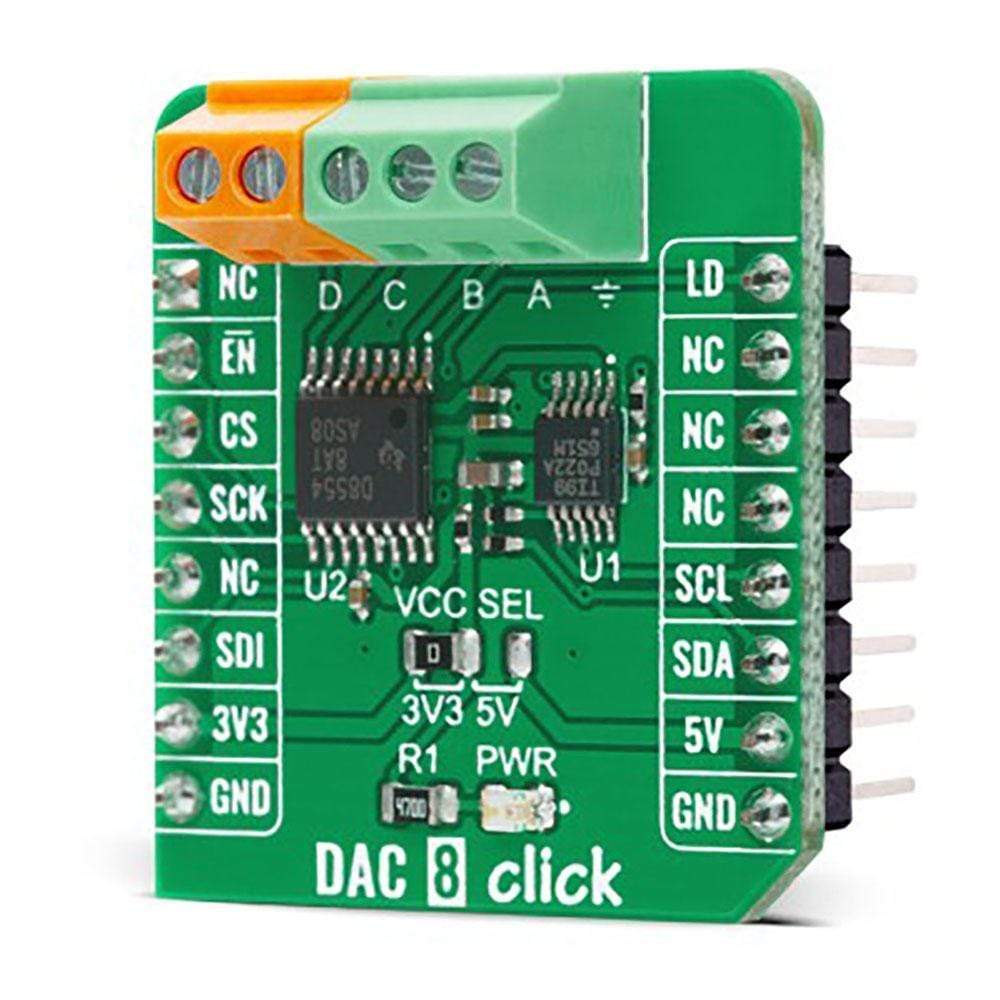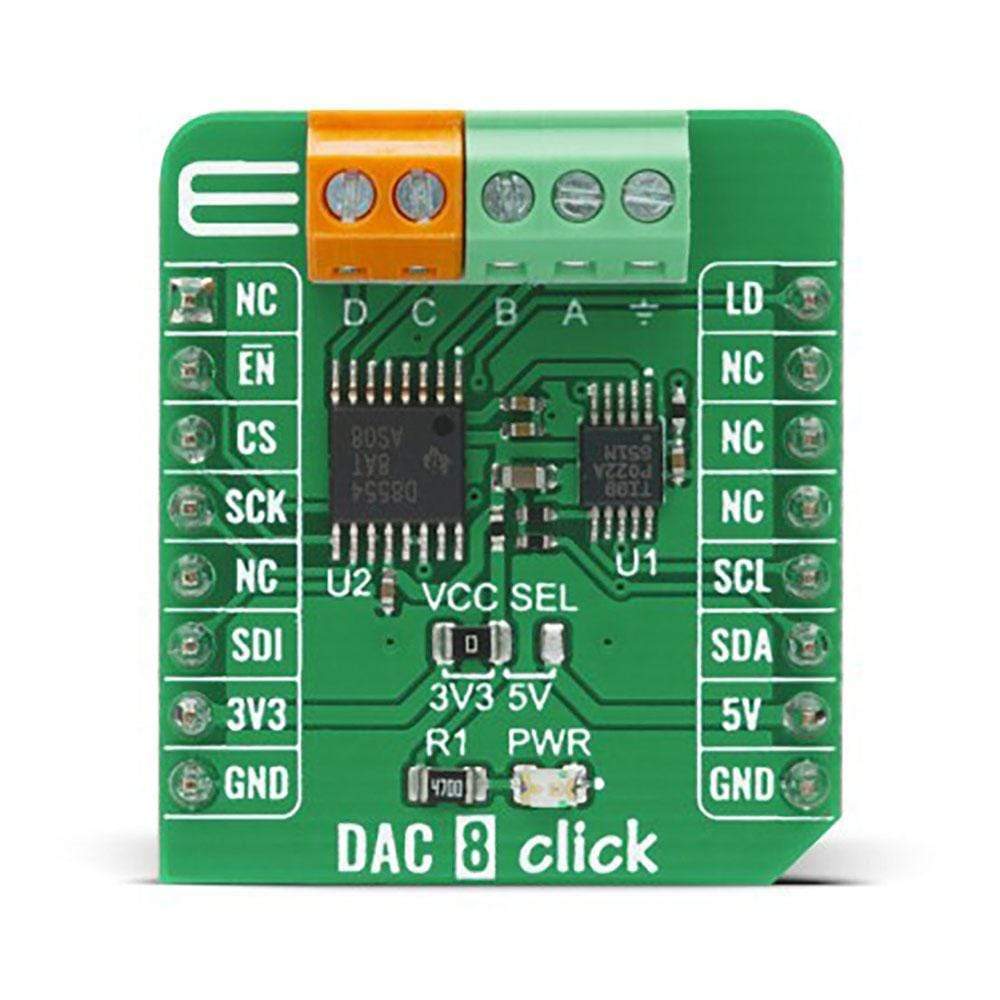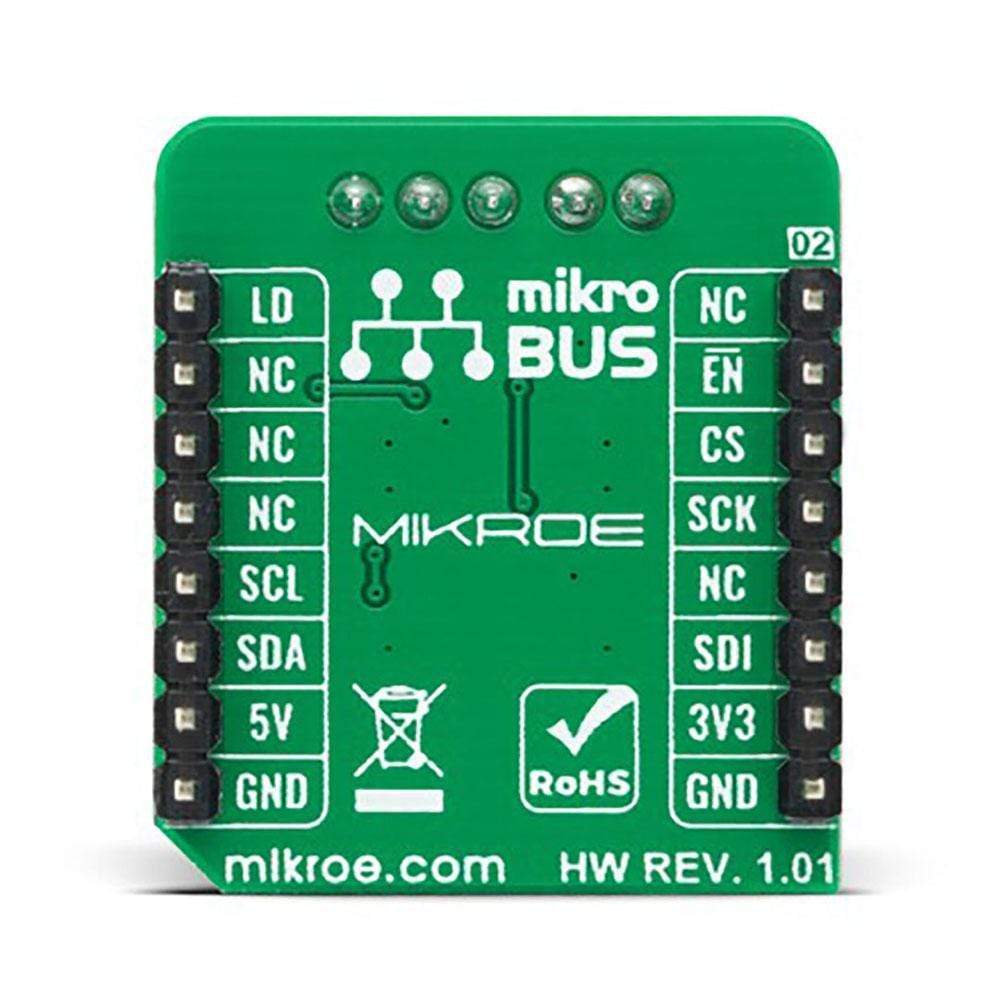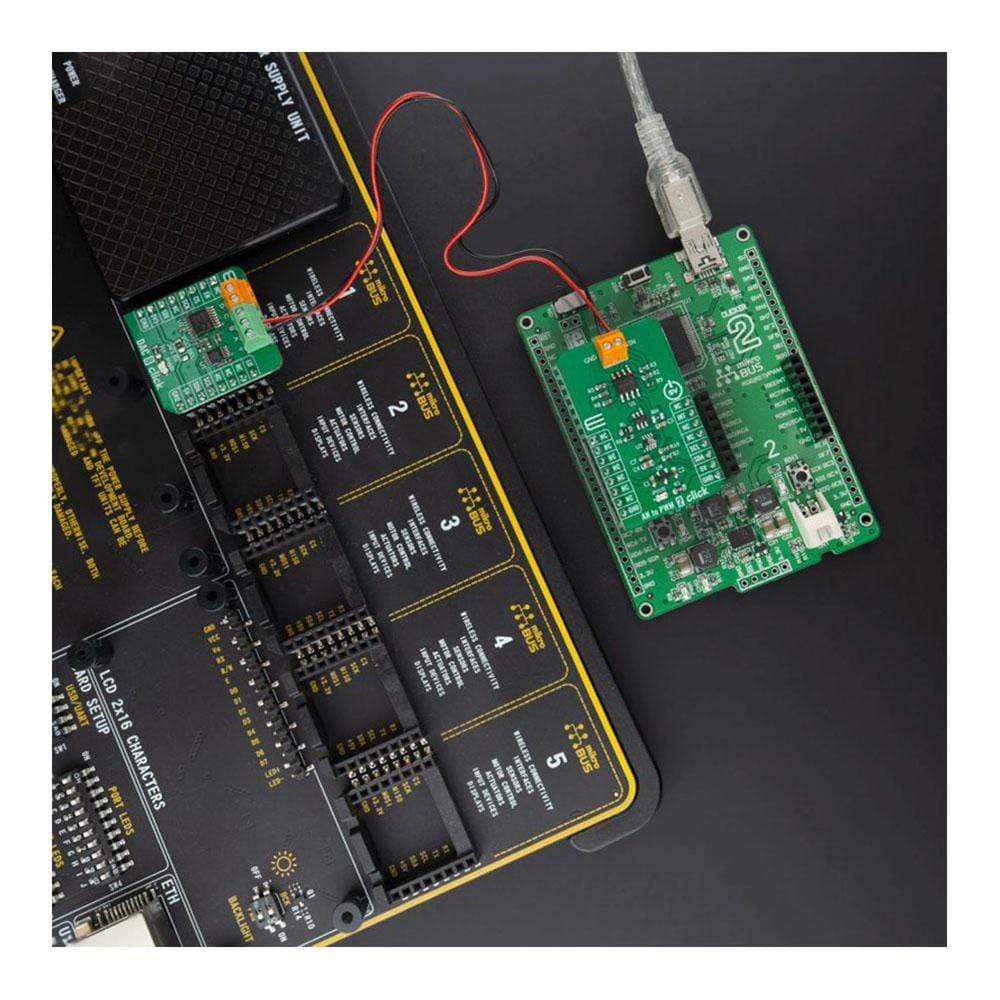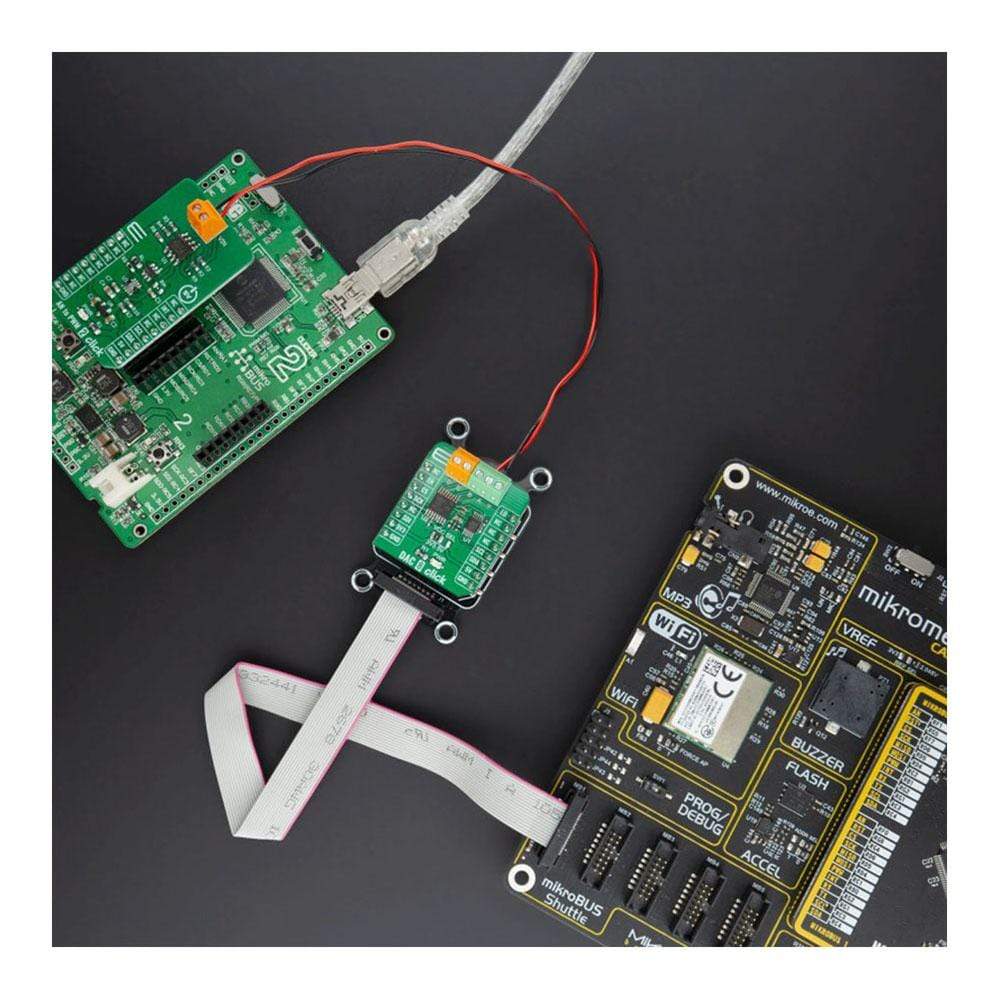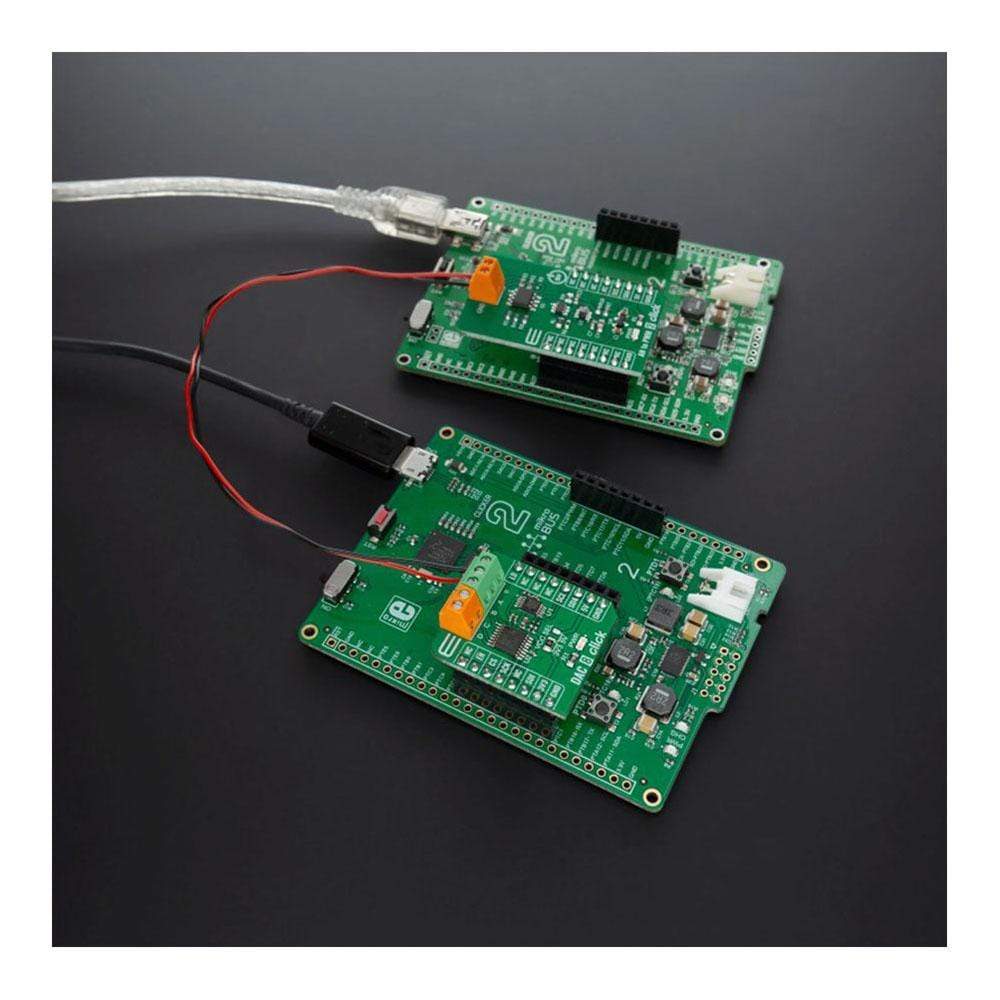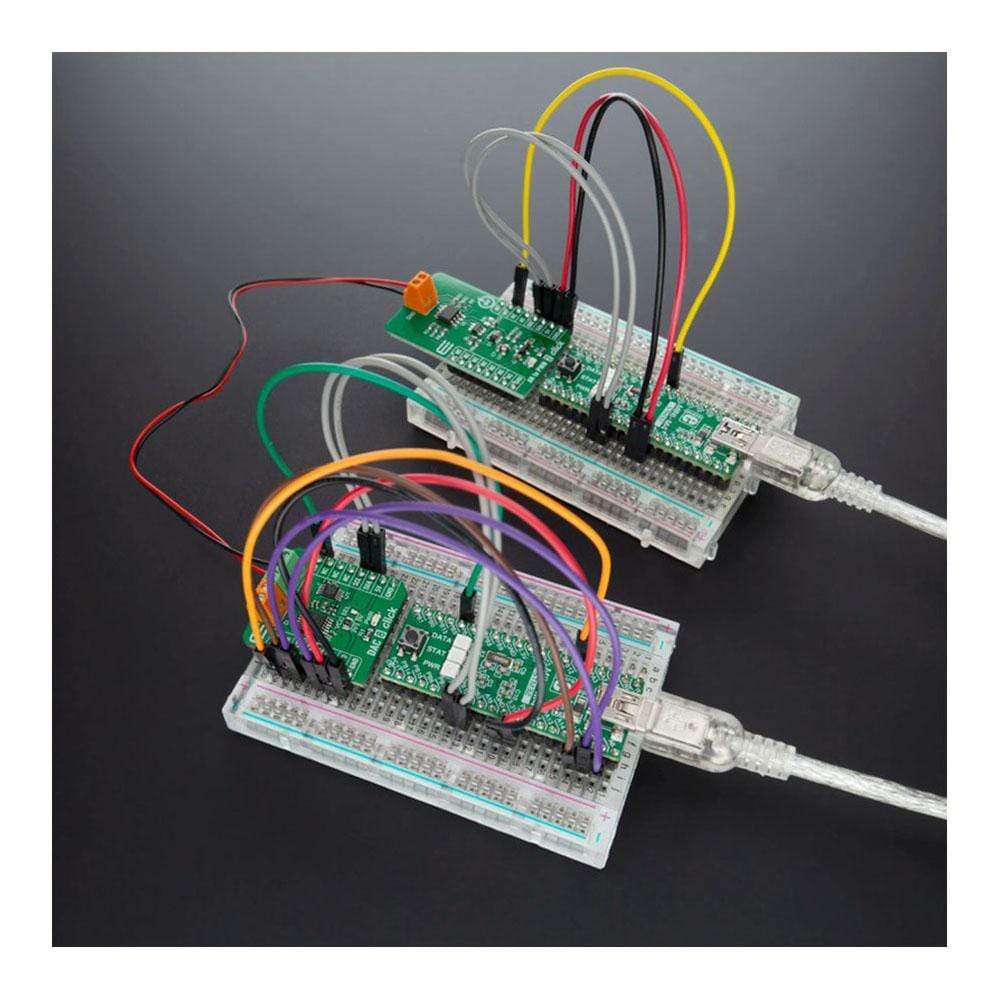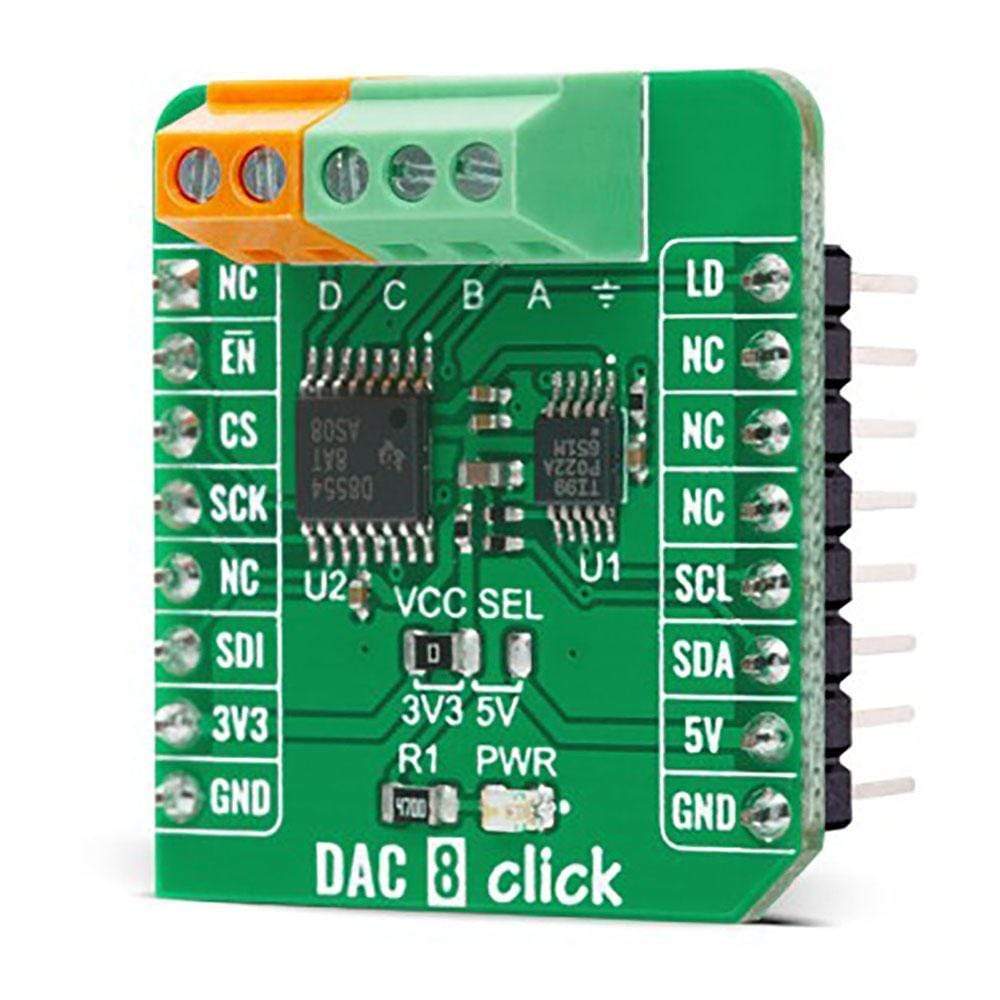
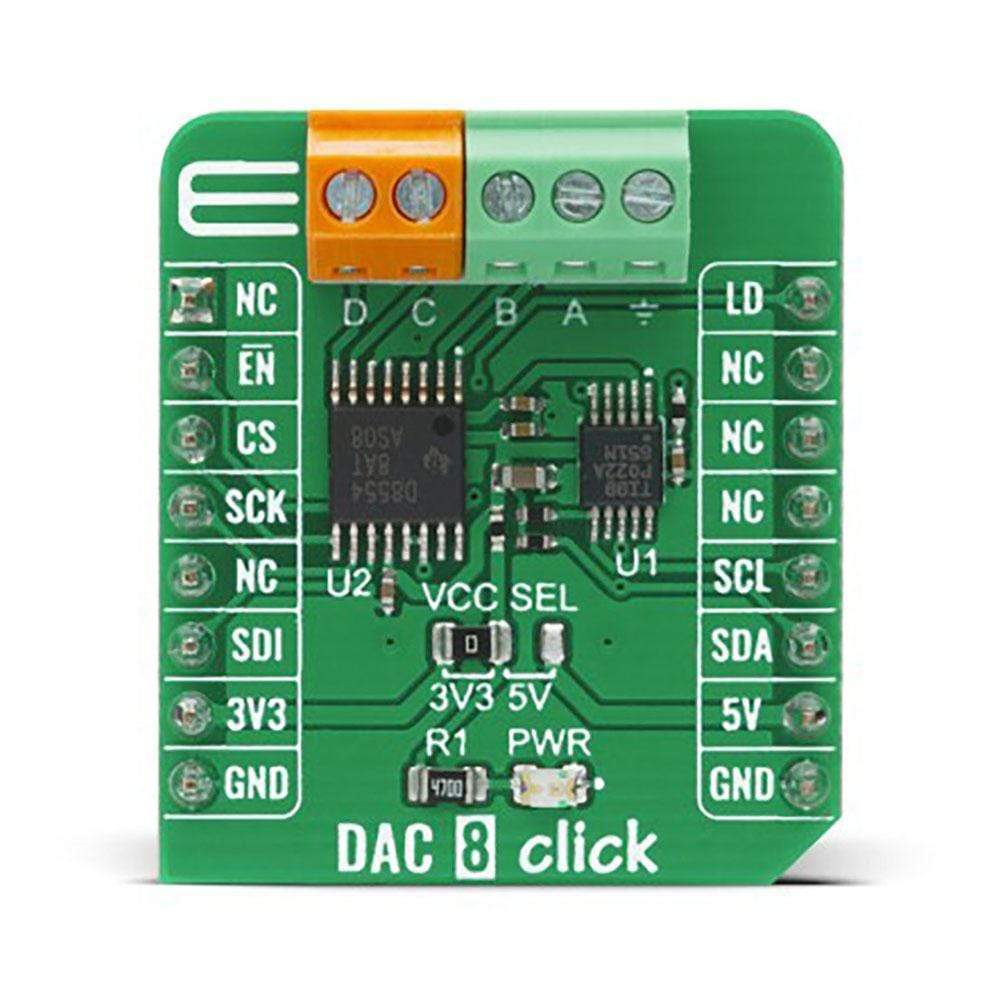
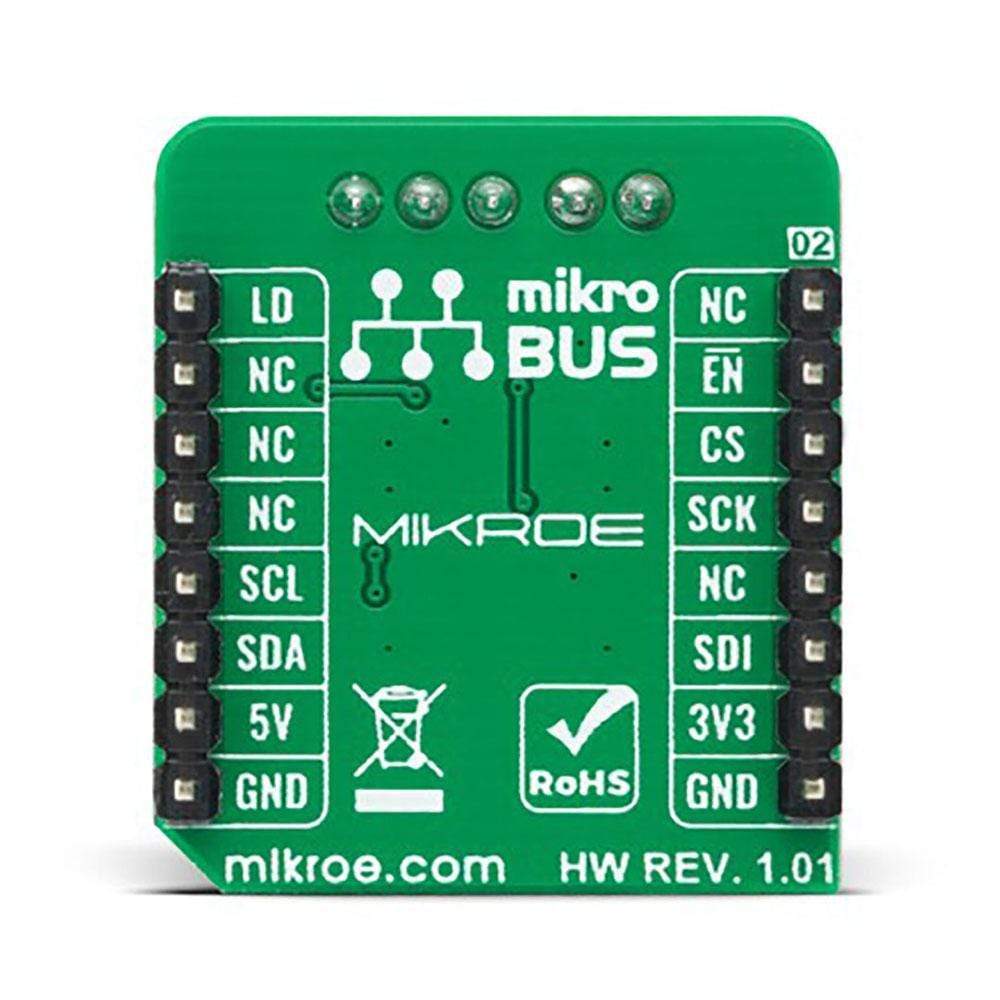
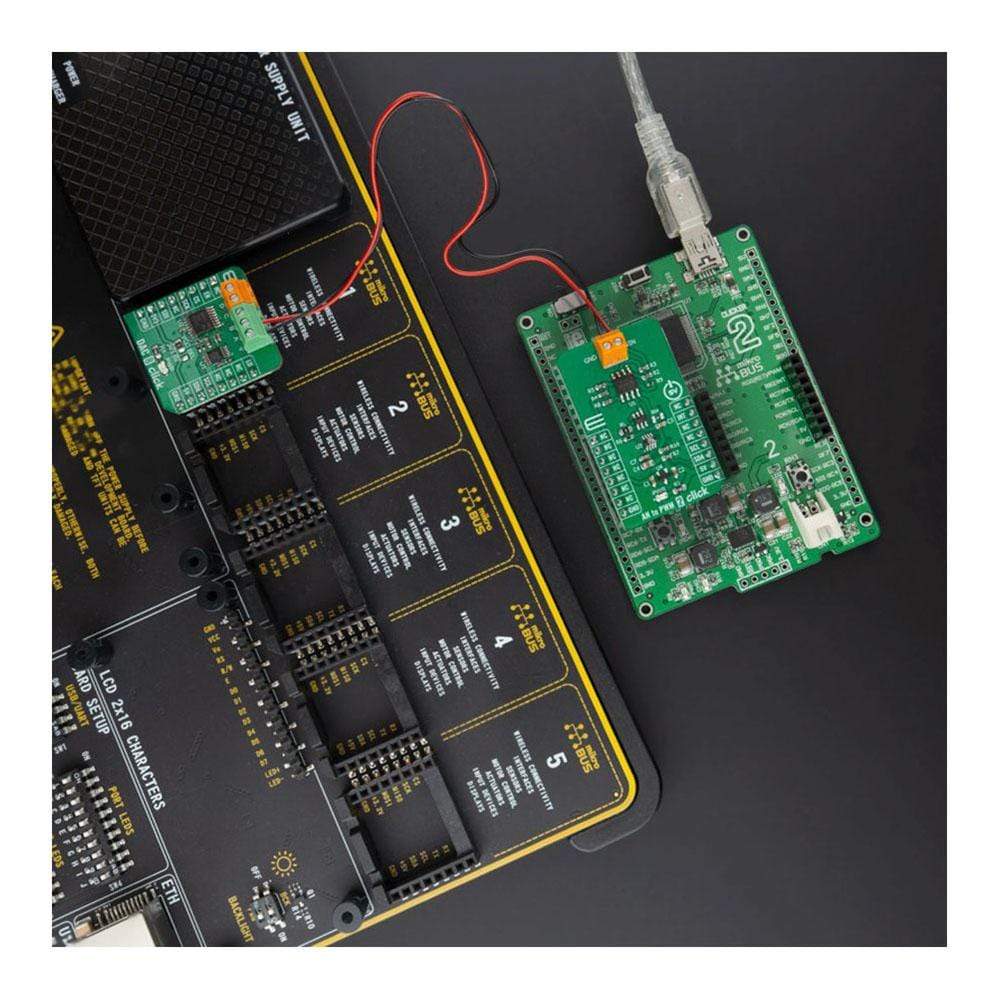
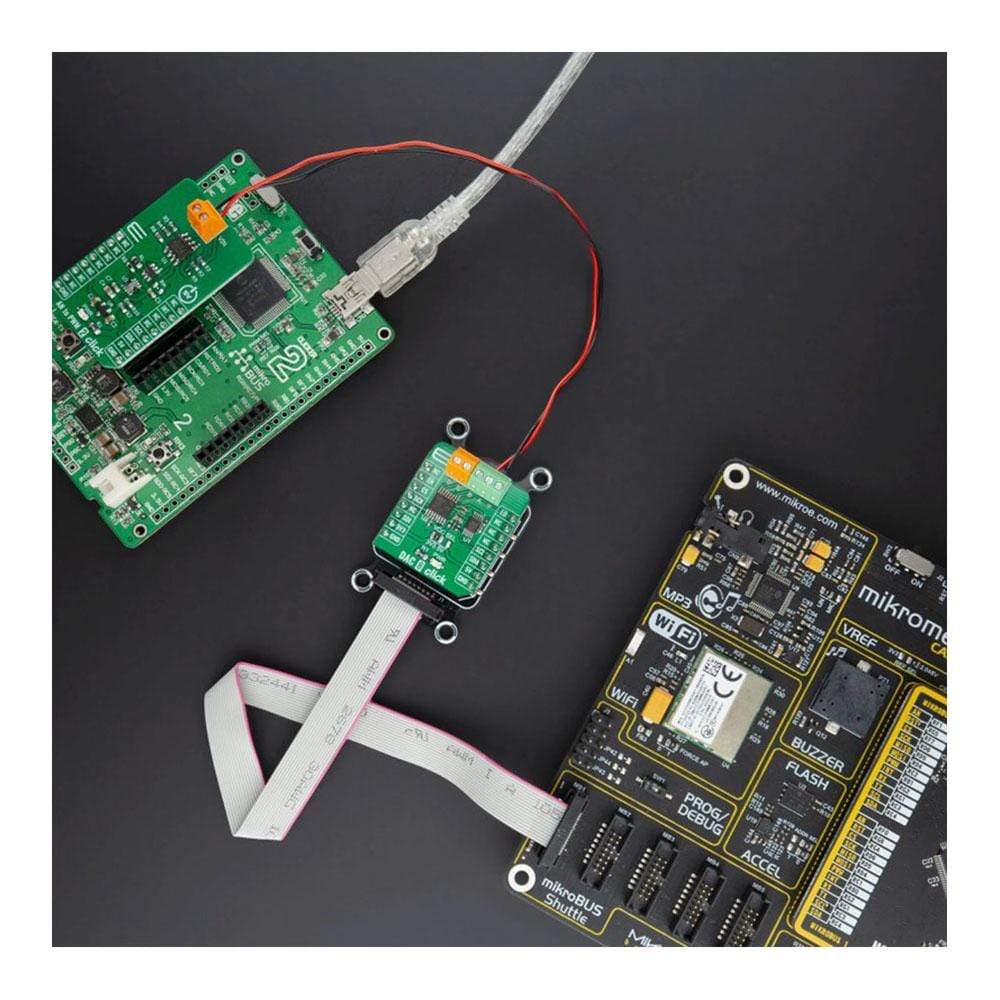
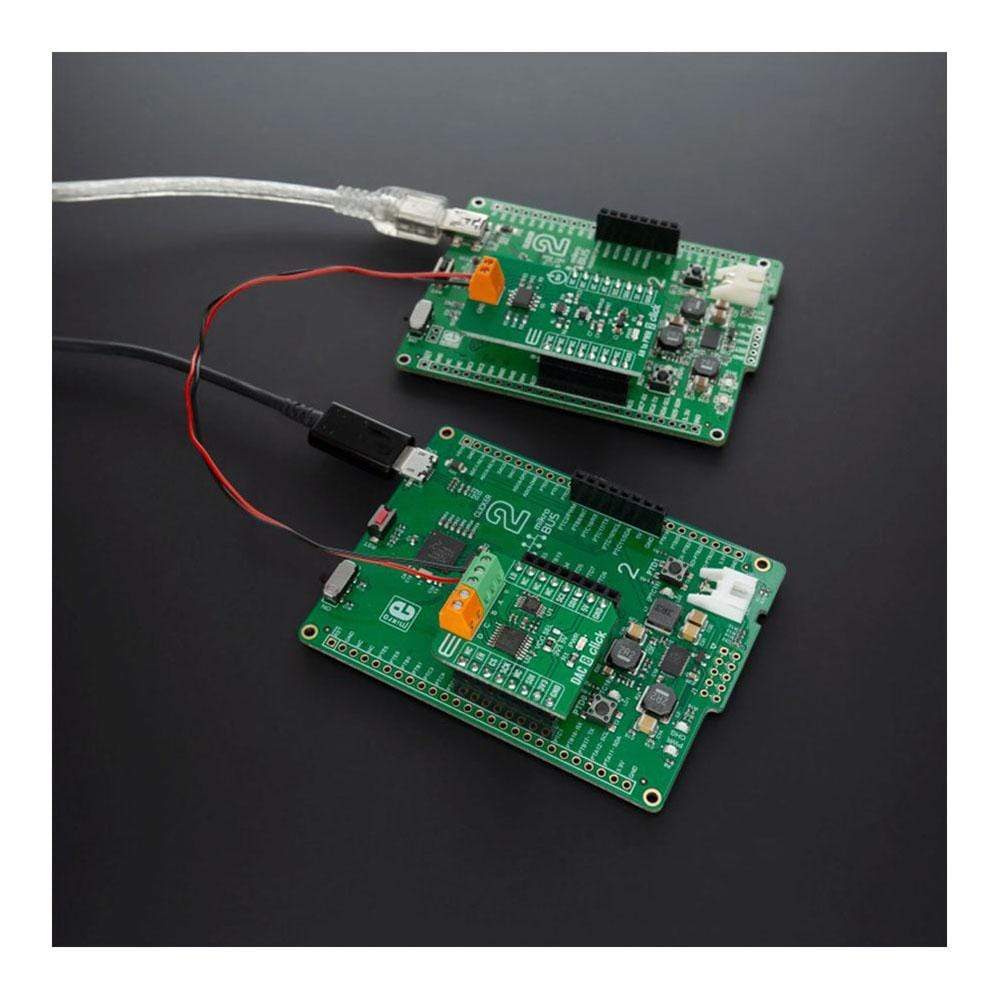
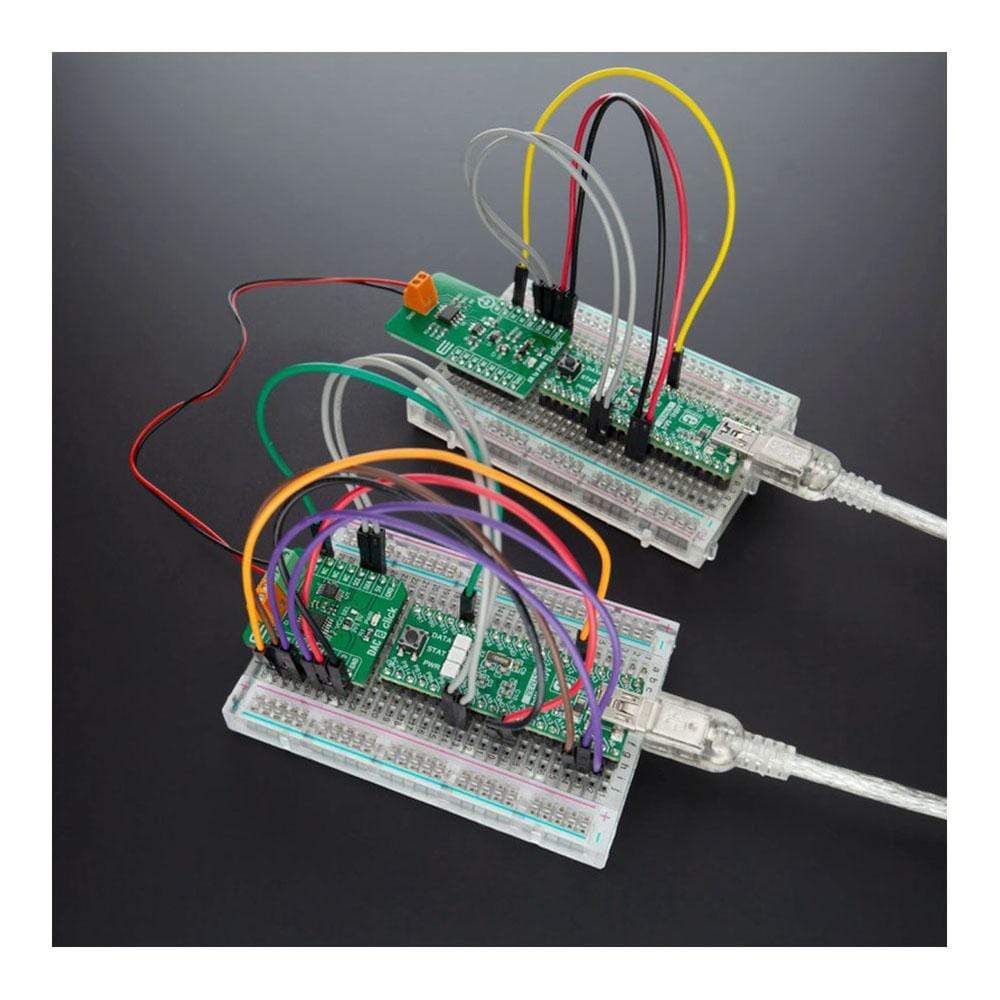
Key Features
Overview
The DAC 8 Click Board™ is a compact add-on board that contains a fully-featured, general-purpose voltage-output digital-to-analogue converter. This board features the DAC8554IPWR, a 16-bit QUAD channel voltage-output digital to analogue converter from Texas Instruments. It offers a low-power operation, good linearity, exceptionally low glitch, and supports a 3-wire SPI serial interface with a clock rate up to 50MHz. Requires an external reference voltage provided by I2C compatible DAC60501MDGSR to set the output range of each DAC channel. It has many features that make it attractive for various applications such as battery-operated equipment, digital gain and offset adjustment, programmable voltage and current sources, and many more.
The DAC 8 Click Board™ is supported by a mikroSDK compliant library, which includes functions that simplify software development. This Click Board™ comes as a fully tested product, ready to be used on a system equipped with the mikroBUS™ socket.
Downloads
How Does The DAC 8 Click Board™ Work?
The DAC 8 Click Board™ is based on the DAC8554IPWR, a 16-bit QUAD channel, ultra-low glitch, voltage-output digital to analog converter from Texas Instruments. It offers good linearity, exceptionally low glitch, and it has high precision output amplifier that allows rail-to-rail output swing over a wide range of supply voltage. What this component additionally has is a Power-On reset function, which ensures that DAC outputs power-up at zero-scale and remains there until a proper write operation occurs. Also, it provides a power-down feature that reduces the current consumption to 175nA per channel.
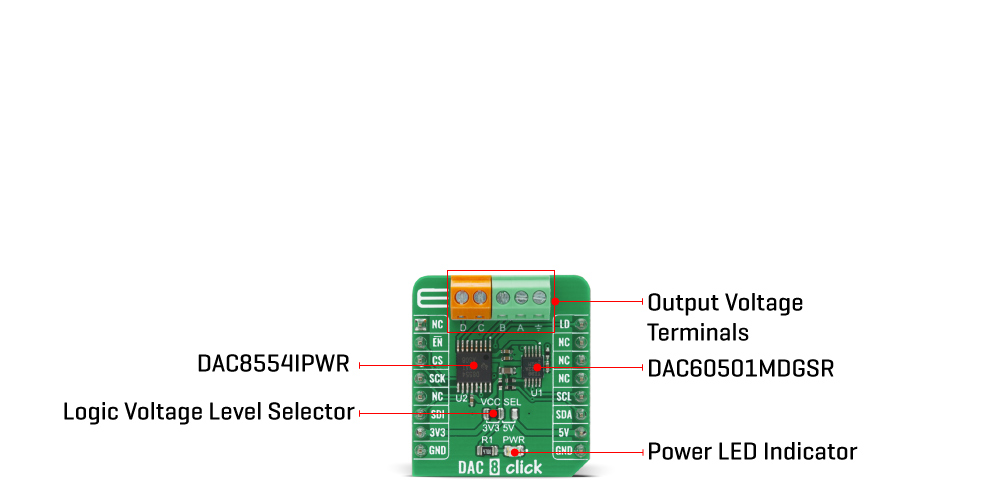
To achieve a fully flexible range of the DAC8554IPWR, an external voltage reference is made user-programmable. For this purpose, the Click board™ uses another DAC, DAC60501MDGSR, 12-bit DAC from Texas Instruments, whose output is brought to the VREF pin of the DAC8554IPWR. That way, the reference voltage of the DAC8554IPWR can be set at any value between 0V and 5V, provides high precision and low power consumption as well. That makes the DAC 8 Click fully customizable solution, well suited for applications where the maximum precision from the output 16-bit DAC is needed. DAC60501MDGSR uses the I2C serial interface to communicate with the MCU and operates at clock rate up to 100kHz.
The DAC 8 Click Board™ communicates with MCU using the 3-Wire SPI serial interface that is compatible with standard SPI, QSPI™, MICROWIRE™ and operates at clock rates up to 50 MHz. Additional functionality such as software simultaneous update capability is implemented and routed at the PWM pin of the mikroBUS™, which allows when new data enter the device, all of DAC outputs can be updated simultaneously and synchronously with the clock. It also possesses enable function routed at CS pin of the mikroBUS™ that is used to connect the SPI interface to the serial port.
The DAC 8 Click Board™ is designed to be operated with both 3.3V and 5V logic levels. The onboard SMD jumper labeled as VCC SEL allows voltage selection for interfacing with both 3.3V and 5V MCUs. More information about the DAC8554IPWR's functionality, electrical specifications, and typical performance can be found in the attached datasheet. However, the Click board™ comes equipped with a library that contains easy-to-use functions, and a usage example that can be used as a reference for the development.
SPECIFICATIONS
| Type | DAC |
| Applications | Can be used in battery-operated equipment, digital gain and offset adjustment, programmable voltage and current sources, and many more. |
| On-board modules | DAC 8 Click is based on the DAC8554IPWR, a 16-bit QUAD channel, ultra-low glitch, voltage-output digital to analog converter from Texas Instruments. |
| Key Features | Low power consumption, high precission, ultra-low glitch, rail-to-rail voltage output, accuracy, stability, and more. |
| Interface | I2C,SPI,GPIO |
| Compatibility | mikroBUS |
| Click board size | S (28.6 x 25.4 mm) |
| Input Voltage | 3.3V or 5V |
PINOUT DIAGRAM
This table shows how the pinout of the DAC 8 Click Board™ corresponds to the pinout on the mikroBUS™ socket (the latter shown in the two middle columns).
| Notes | Pin |  |
Pin | Notes | |||
|---|---|---|---|---|---|---|---|
| NC | 1 | AN | PWM | 16 | LD | Software Update | |
| SPI Enable | EN | 2 | RST | INT | 15 | NC | |
| SPI Chip Select | CS | 3 | CS | RX | 14 | NC | |
| SPI Clock | SCK | 4 | SCK | TX | 13 | NC | |
| SPI Data OUT | SDO | 5 | MISO | SCL | 12 | SCL | I2C Clock |
| SPI Data IN | SDI | 6 | MOSI | SDA | 11 | SDA | I2C Data |
| Power Supply | 3.3V | 7 | 3.3V | 5V | 10 | 5V | Power Supply |
| Ground | GND | 8 | GND | GND | 9 | GND | Ground |
ONBOARD SETTINGS AND INDICATORS
| Label | Name | Default | Description |
|---|---|---|---|
| LD1 | PWR | - | Power LED Indicator |
| JP1 | VCC SEL | Left | Power Supply Voltage Selection 3V3/5V: Left position 3V3, Right position 5V |
DAC 8 CLICK ELECTRICAL SPECIFICATIONS
| Description | Min | Typ | Max | Unit |
|---|---|---|---|---|
| Supply Voltage | -0.3 | - | 6 | V |
| Maximum Current Consumption | - | - | 208 | μA |
| SPI Clock Frequency | - | - | 50 | MHz |
| Operating Temperature Range | -40 | - | +105 | °C |
| General Information | |
|---|---|
Part Number (SKU) |
MIKROE-4229
|
Manufacturer |
|
| Physical and Mechanical | |
Weight |
0.019 kg
|
| Other | |
Country of Origin |
|
HS Code Customs Tariff code
|
|
EAN |
8606027380082
|
Warranty |
|
Frequently Asked Questions
Have a Question?
Be the first to ask a question about this.

